 |
 |
Media and Files |
|
|
|
This page contains a variety of media that you may find interesting. Enjoy!
Click for WakeTouch Video (1080HD, largest file)
Click for WakeTouch Video (720HD, medium file)
Click for WakeTouch Video (480SD, smallest file)
Bare WakeTouch PCB's being prepped for soldermask.
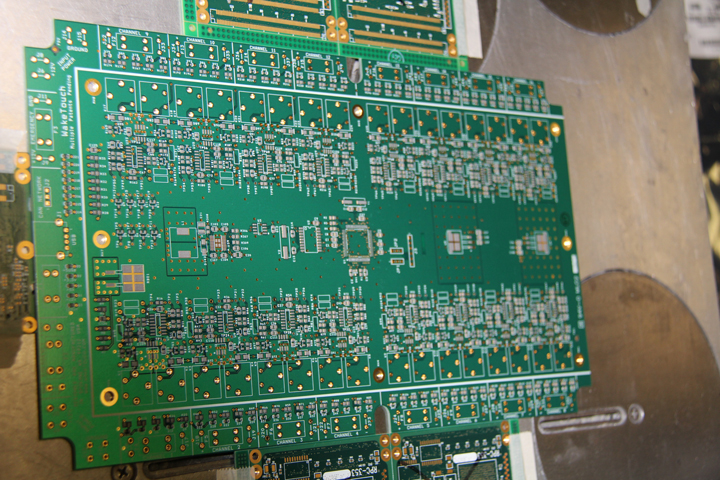
WakeTouch PCB's in soldermask station. (1 of 3 photos)
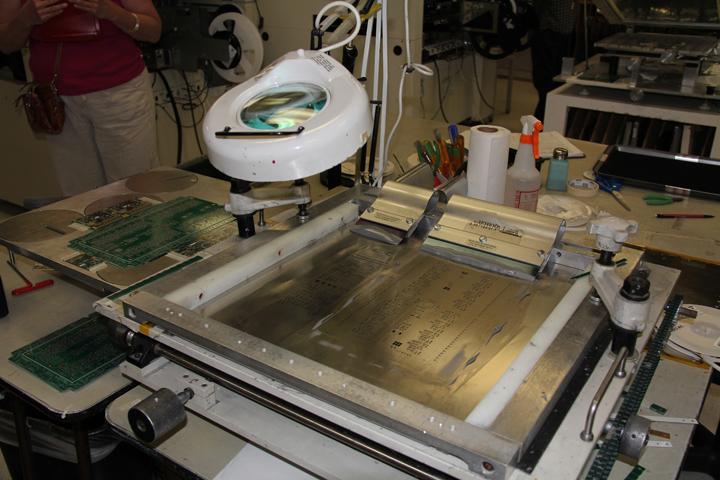
WakeTouch PCB's in soldermask station. (2 of 3 photos)
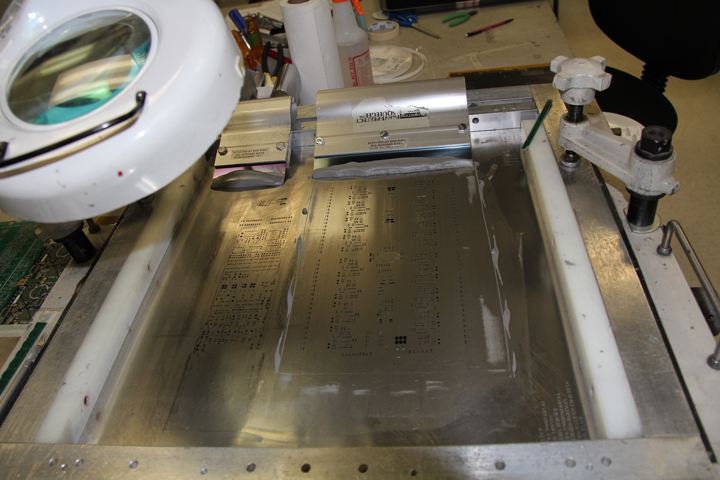
WakeTouch PCB's in soldermask station. (3 of 3 photos)
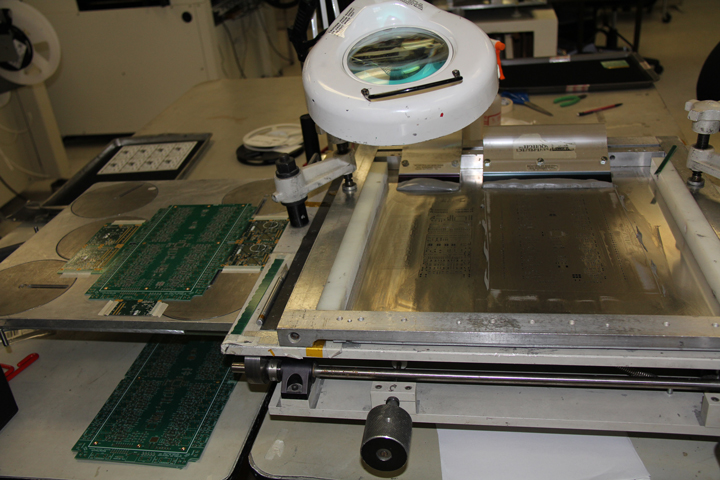
Pick and Place machine stuffing one of the WakeTouch PCB's. These machines are fun to watch. They "pick" components from the spools in the front of the machine (there are appoximiately nine active spools in these photos) and "place" them automatically on the board, much faster and with much more positional accuracy than human hands. Later on this page you will see some components being placed by hand - and that hand has to use microtweezers because the components are so tiny. (1 of 4 photos)
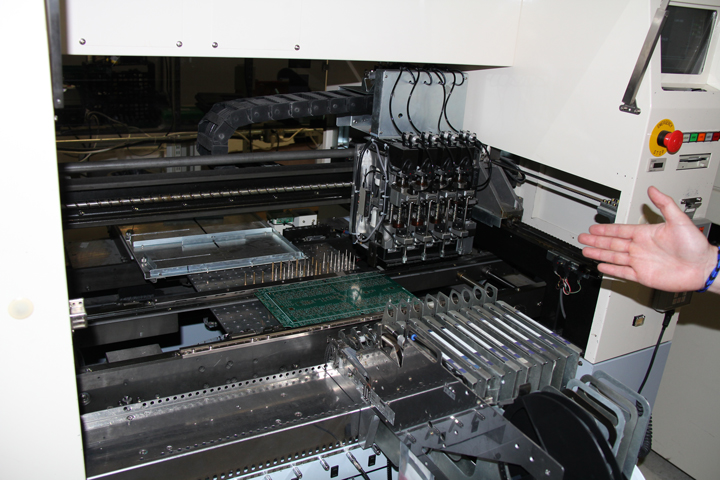
Pick and Place machine stuffing one of the WakeTouch PCB's. (2 of 4 photos)
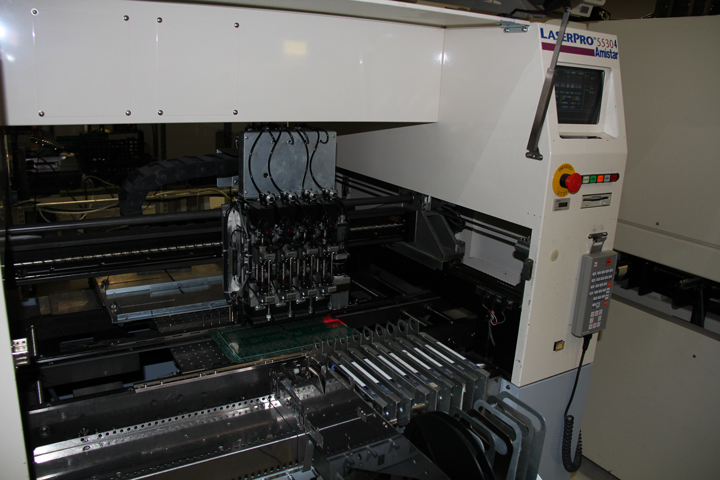
Pick and Place machine stuffing one of the WakeTouch PCB's. (3 of 4 photos)
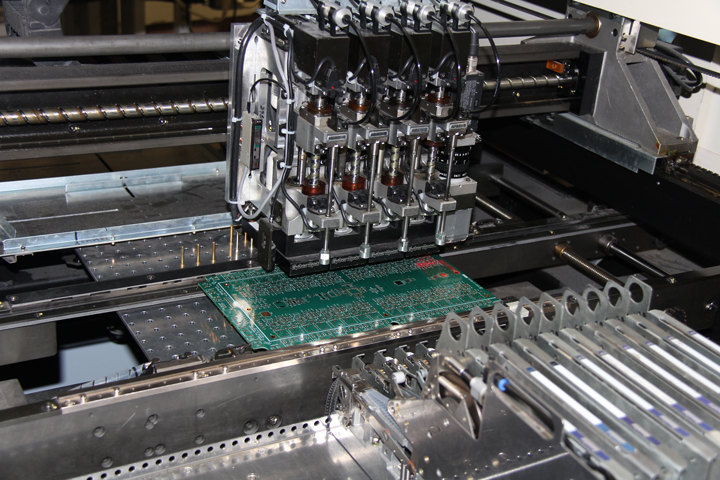
Pick and Place machine stuffing one of the WakeTouch PCB's. (4 of 4 photos)
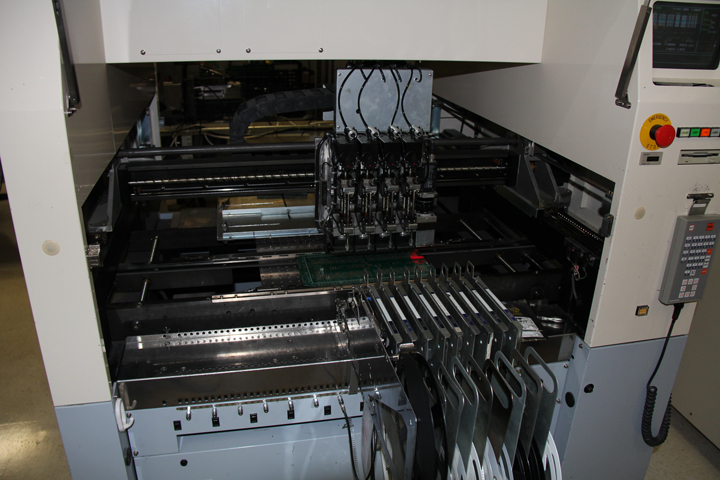
To give you a real sense of what's happening, here is a video of a pick and place machine stuffing a WakeTouch PCB. Keep in mind that some of the components being placed on these boards are just a few millimeters long, yet these machines can position them perfectly. (click image for video)
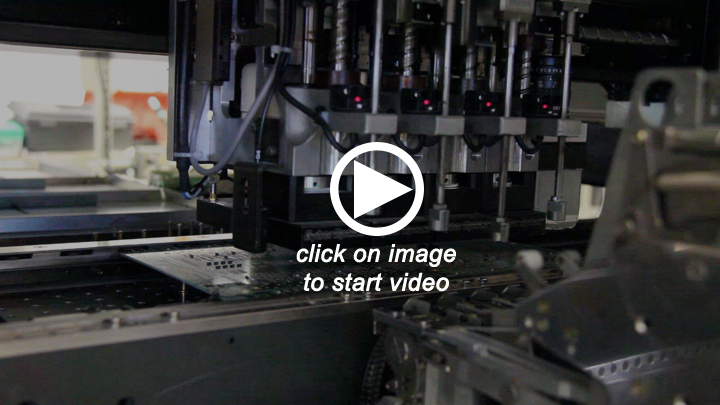
The next video deserves some introduction. The pick and place machines (above) essentially "stick" surface mount components to the WakeTouch PCB's. They then need to be soldered en masse - and that is done with a process called reflow soldering. A reflow solder machine looks a lot like one of those conveyor-belt pizza ovens, except that it is about 20 feet long and has multiple separate stations along the way that carefully raise and lower the ambient temperature as the board passes though them. The solder that is already on the boards must get hot enough to melt, or "reflow", but the components cannot endure too much heatsoak or they will be damaged. It's a delicate operation, in this case involving five separate heating stations from start to finish. The first part of this video shows a freshly pick-and-placed WakeTouch board being sent into reflow soldering, while the second portion shows a finished reflowed WakeTouch board coming out the other end. (click image for video)
 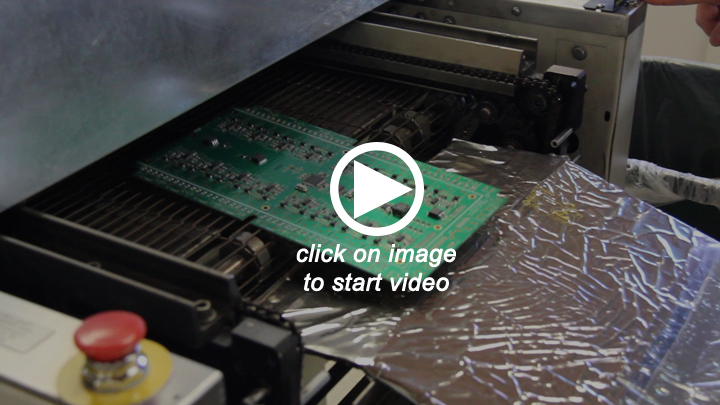
Not all components are pick-and-placed; some are installed by hand. The WakeTouch boards in the next two photos have a combination of surface mount and through-hole components already in place, and additional components are being manually placed and/or soldered. Note that at this point in the assembly process, the microcontroller (square 100 pin footprint in the center of the board) is still not installed. It will be placed and reflowed later.
Manual component placement. (1 of 2 photos)
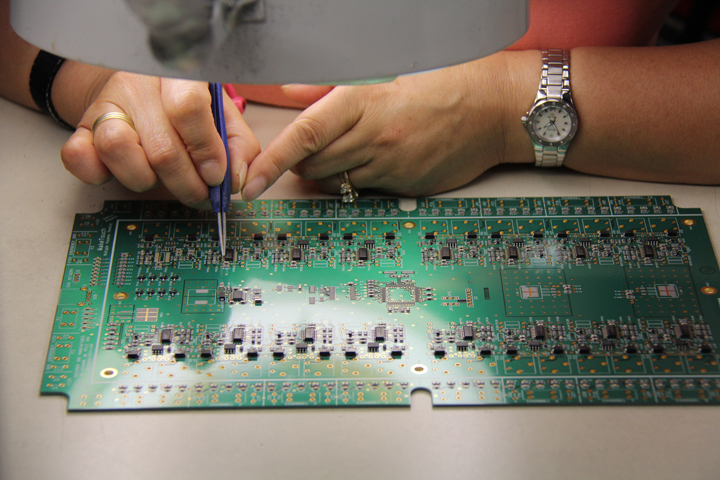
Manual component placement. (2 of 2 photos)
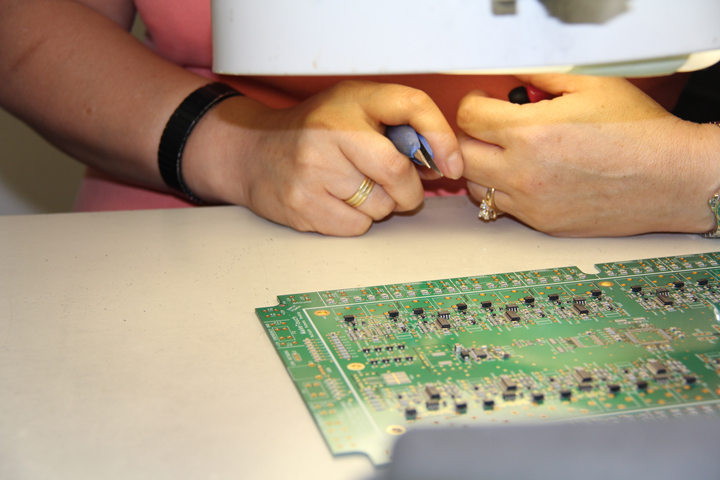
Early development of hull sensing, and relay control based on hull orientation. As the tablet's orientation changes, the AutoWake software seeks to correct it by controlling ballast pumps and gate/plate actuators (not actually connected in this video). You can hear the relays clicking, and see the associated LED's go on and off. Each channel has five LED's to indicate things like burned-out fuses, commands issued to the channel, actual forward/reverse pumping, etc. (click image for video)
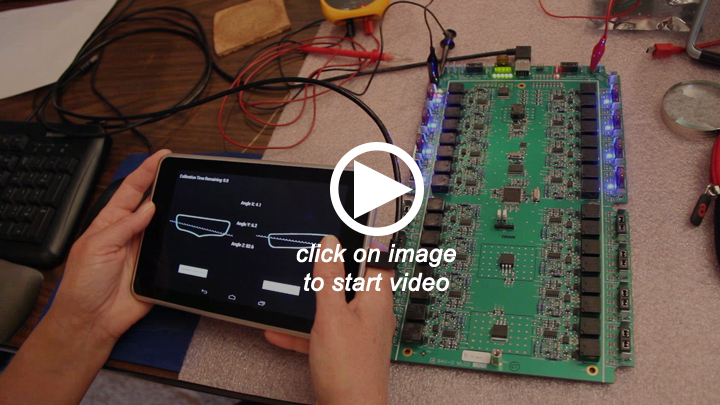
Early development of one channel of the WakeTouch analog circuitry, and tablet communications.
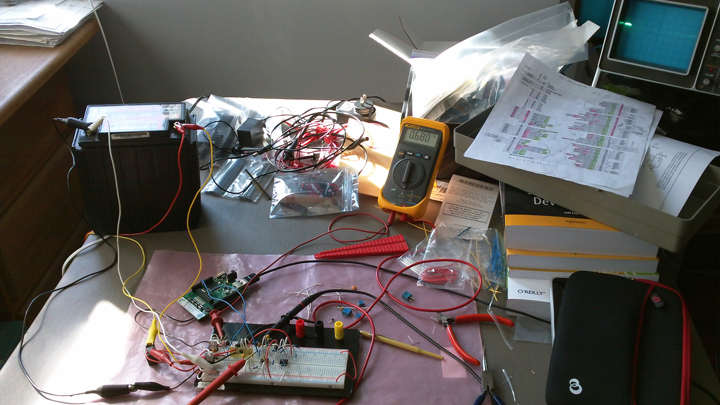
Early characterization of aerator pump behavior, and lift/head studies. The hose keeps the bucket full to simulate input pressure from the pump being below the waterline in a hull, while the pump lifts the water out and up over the ladder to simulate output to a fat sac or ballast tank. You can see the pump wiring snaking through the window to the breadboarding station indoors.

Early characterization of impeller pump behavior. Same general situation as for aerator pumps above, except that impeller pumps are not themselves immersed in water so the intake side and self-priming behavior is different than for aerator pumps, which cannot self-prime.
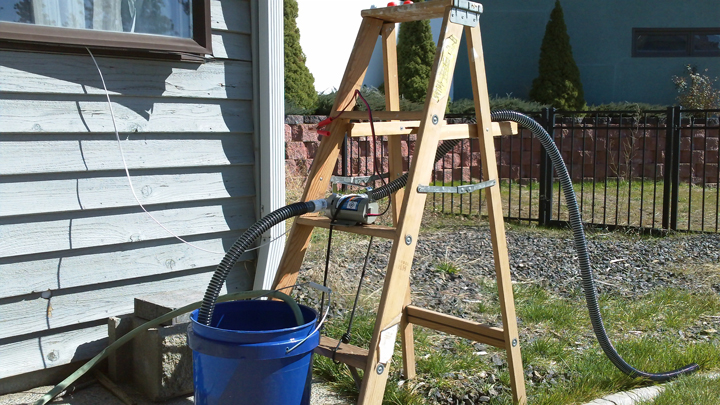
The first WakeTouch install, on a Tige 24Ve in 2013.
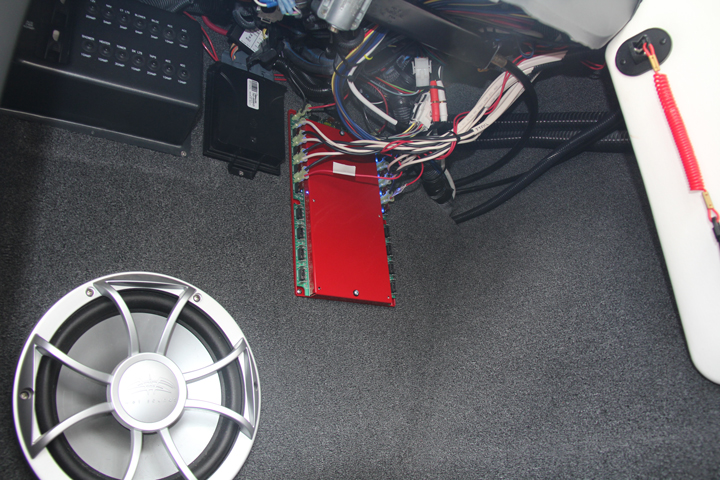
Back to Top of Page
|
|
|
|